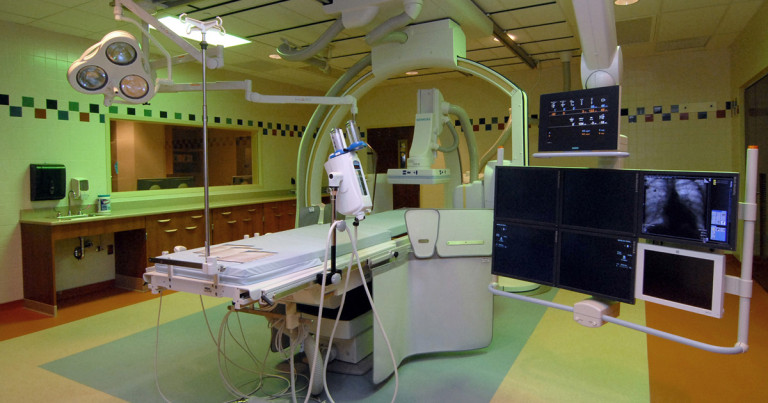Unfortunately, sometimes it’s the walls, the floor, or the ceiling. It seems like every hospital I’ve visited lately is under construction, renovating their current space or planning for large additions. With all the changes, it’s easy to forget about the “unseen” aspects of the design, such as Mechanical Noise and Vibration Control.
The Unseen Problem
A common problem is loud mechanical units going in over operating suites. Vibration and noise from the mechanical units can cause problems with the medical equipment inside the suite. Too much noise and vibration can ultimately compromise the accuracy of the equipment. This can lead to misinterpretation of medical data and serious health issues. Operating suites are also very active places with lots of health caregivers interacting with each other. Excessive noise levels in the operating room can cause communication issues at a critical moment in time. However, starting in 2010, the FGI Guidelines incorporated extensive requirements for noise and vibration control in healthcare facilities.
FGI Guidelines
The FGI Guidelines are published by the American Society for Healthcare Engineering (ASHE) and the American Hospital Association (AHA), and they contain six distinct sections of requirements for acoustics and noise control in healthcare facilities including:
Part 1 – Site Exterior Noise
Part 2 – Acoustical Finishes and Details
Part 3 – Room Noise Levels
Part 4 – Performance of interior wall and floor/ceiling constructions (Noise Isolation)
Part 5 – Speech Privacy
Part 6 – Building Vibration and Structure-borne Sound
Note – part 3 of the FGI Guidelines refers to room noise levels, which in-turn refer to the mechanical systems noise and vibration control. The FGI Guidelines are also the source document referred to by LEED HC for all acoustical criteria. While you might not be planning for environmental or green building, these guidelines are indispensable for any healthcare construction or renovation.
The Building Problem
You can’t drive through a major city without noticing the large number of healthcare construction projects. With high land prices and expensive medical equipment costs, every square foot of usable space needs to be maximized – including the space over the Surgical Suites and Operating Rooms.
Mechanical and electrical coordination is huge; there are limited spaces and chances to make everything fit and work. Plus the cost of construction materials is going up – copper, wire, steel – almost any metal. The time and cost restraints force mechanical and electrical trades to look for money saving solutions, and often these solutions get changed in the field without assessing the acoustical effects on healthcare, hospital staff, patients, and patient satisfaction.
Sound Vibration Solutions
In existing construction, there’s no silver bullet plan for fixing these issues. Sometimes, it’s necessary to make sound and vibration measurements to identify the problems. Working with an independent acoustical consultant, like Acoustics By Design, gives you the assurance that you’re getting unbiased recommendations. For new construction, we use 3D computer modeling software to predict the sound/vibration problems even before construction begins. In the fast pace of hospital and medical facility design and construction, make sure the noise and vibration is under control. It’s much cheaper to design an alternate solution than to fix a problem later.

View my comment concerning hospital noise in the Industrial blog.
Thanks